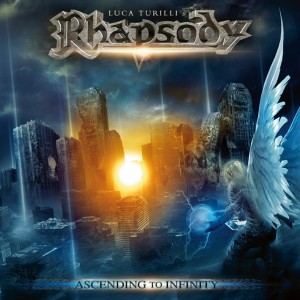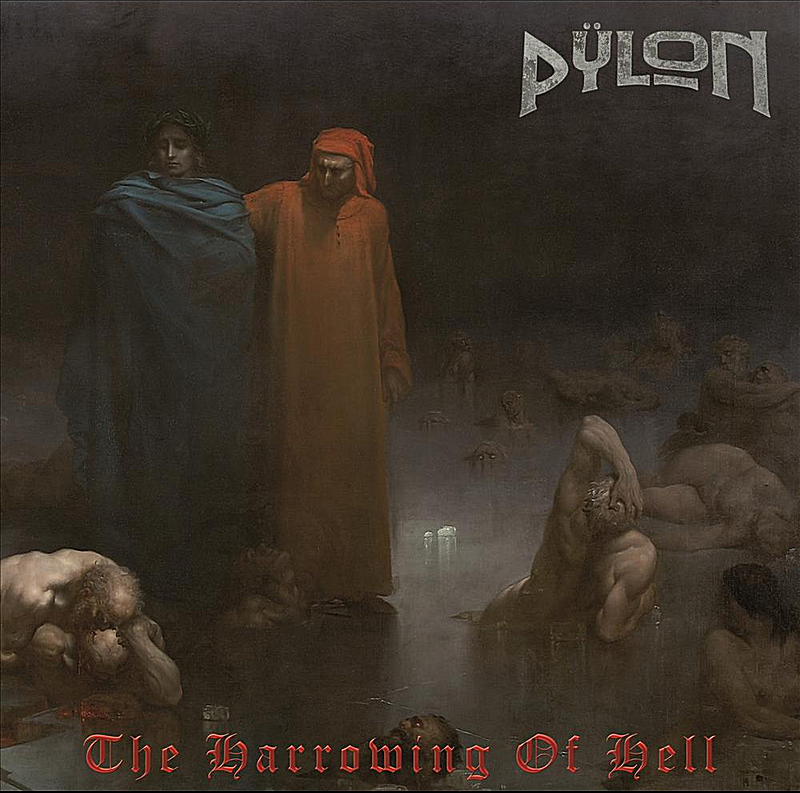Track 3 of Rhapsody & Luca Turilli’s Ascending to Infinity is titled “Dante’s Inferno”. —Luca Turilli, “Dante’s Inferno,” Wikipedia, June 22, 2012 (retrieved January 25, 2024).
Hell III by Hell
The metal band Hell used Gustave Doré illustration for their cover art for a trio of albums. Hell III was released in 2012 and used The Mountains Foot.
You can find their other albums on the site here: Hell I and Hell II
Find Hell III here.
Find The Mountains Foot here.
Contributed by Gianluca Giuseffi Grippa
Decay of Humanity by Mechanical Hydra
 Decay of Humanity is a 2012 album by metal band Mechanical Hydra. The art for the album cover features a colored version of Gustave Doré’s illustration, The Schismatics – Mahomet. The illustration is of Canto 18 of the Inferno.
Decay of Humanity is a 2012 album by metal band Mechanical Hydra. The art for the album cover features a colored version of Gustave Doré’s illustration, The Schismatics – Mahomet. The illustration is of Canto 18 of the Inferno.
Find Decay of Humanity here.
Find The Schismatics – Mahomet by Gustave Doré here.
Contributed by Gianluca Giuseffi Grippa
Pÿlon’s The Harrowing of Hell
“The original album from these Swiss doomsters was only released on vinyl last year and reviewed by our resident ultimaniac Scott Waters. Roxx Productions decided to make this rare piece more available to the headbanging public by reissuing it in two new formats. The single-disc version has the seven original songs and adds the bonus tracks ‘Golden Voice’ and ‘Lines.’
[. . .]
“The lyrical content is strictly biblical, and when singer Matt Brand kicks into his gravel-tongued mode, there’s heaviness aplenty, especially on the tune ‘The Stream of Forgetfulness.’ Pylon’s cover of Black Sabbath’s ‘Paranoid’ disassembles the original with its slow delivery. I can appreciate the doom metal more than the stoner rock here, but all in all, I’m glad the light of day has shone on this band – surely we will hear more from Pylon.” –Chris Gatto, HM Magazine
This album art uses Gustave Doré’s 1861 painting titled, Dante and Virgil in the Ninth Circle of Hell.
Listen to the album here.
Contributed by Gianluca Giuseffi Grippa.
Jane Alexander, Frontier With Church (2012-2014)
 “In Frontier With Church, the artist makes direct reference to the procession encountered by Dante and Matilda at the summit of Mount Purgatory, interpreted in the temporal contexts of proselytism, migration, and trade, on their way to paradise. With Matilda—who clearly prepares Dante for his meeting with Beatrice—Dante witnesses a procession which forms an allegory within the allegory, somewhat like Shakespeare’s play with a play, in which the characters are walking symbols rather than real people. Alexander’s tableau is thus intended to represent the earthly paradise, a borderline space between earth and divine sanctuary: a frontier with attendants, messengers, custodians, and cargo. The tension revolves around human figures rendered with extreme realis, concurring in the creation of the moment before Dante’s meeting with the woman who (allegorically) symbolizes the path to God. All the creatures of the tableau are life-sized and share the real space occupied by the Viewer/s. They have a spectral presence within that space which silently enacts a living history.”
“In Frontier With Church, the artist makes direct reference to the procession encountered by Dante and Matilda at the summit of Mount Purgatory, interpreted in the temporal contexts of proselytism, migration, and trade, on their way to paradise. With Matilda—who clearly prepares Dante for his meeting with Beatrice—Dante witnesses a procession which forms an allegory within the allegory, somewhat like Shakespeare’s play with a play, in which the characters are walking symbols rather than real people. Alexander’s tableau is thus intended to represent the earthly paradise, a borderline space between earth and divine sanctuary: a frontier with attendants, messengers, custodians, and cargo. The tension revolves around human figures rendered with extreme realis, concurring in the creation of the moment before Dante’s meeting with the woman who (allegorically) symbolizes the path to God. All the creatures of the tableau are life-sized and share the real space occupied by the Viewer/s. They have a spectral presence within that space which silently enacts a living history.”
From The Divine Comedy: Heaven, Purgatory, and Hell Revisited by Contemporary African Artists by Simon Njami.
For more on the South African artist, see Wikipedia.
- 1
- 2
- 3
- …
- 18
- Next Page »



